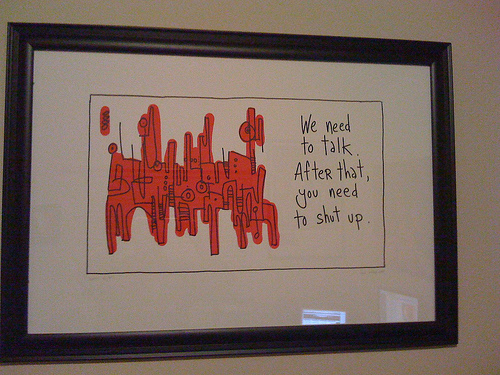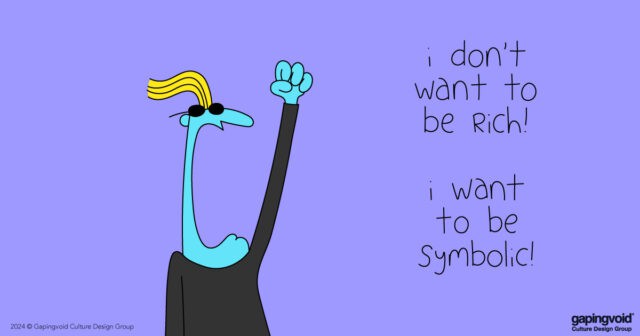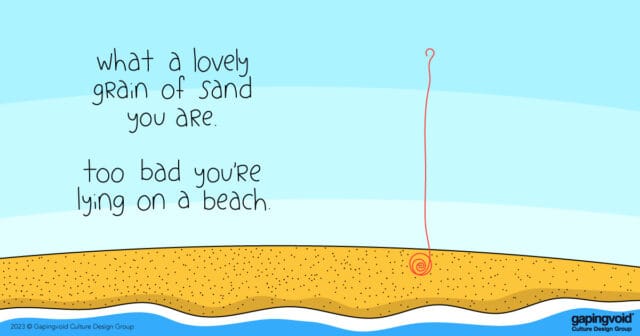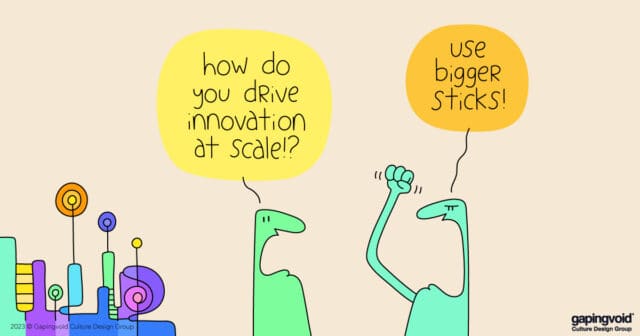
[Brian Manley kindly just sent me a picture from his Flickr stream of his new “We Need To Talk” print, framed and hanging in his office. Thanks, Brian!]
A while ago, I talked about “Social Markers”, a form of “Social Object” that places you in context within a group.
Social Markers are a prime form of social shorthand, that people use to STAKE OUT the ecosystem they’re occupying. So why do I find this such a useful term for marketers? Because obviously, if your product is a Social Marker in your industry ecosystem [the way the iPhone is in the mobile world, or Starbucks is in the coffee world, or Amazon is the book world, or Google is in the search world, or Whole Foods is in the supermarket world, or Virgin is in the airline world, or English Cut in the bespoke world etc etc] you will have an AMAZING competitive advantage to call your own.
And if the product your company makes is not a Social Marker, I guess the first question would be, “Why the hell not?” Quit your job and start over.
A few weeks ago I read an article in The Economist about how very rich Russians have suddenly started buying the art of Damien Hirst and other Western Contemporaries in large numbers.
Hirst is very, very famous. His work sells for millions. We could argue his work’s artistic merits till the cows come home… his work is cleverly designed to provoke that kind of controversy, anyway. But I’m not here to play art critic. I’m here to talk about something else.
When people buy expensive, famous art, it’s not just about the art in question. It’s also about the social dynamic that surrounds it.
When you spend a king’s ransom on a work of art, you are basically sending a message to the world, “I HAVE ARRIVED”.
“I, too, am now a member of a certain elite group. Like my peers, I too can appreciate and afford the likes of Hirst, or Warhol, or Johns, Rauschenberg, Matisse, Picasso etc etc. ”
“Art as Social Marker”. Exactly.
People buy large yachts for the same reason. Or large apartments in Mayfair or Central Park South. Or deerstalking estates in Scotland. Or golf memberships to Augusta. Or islands in the Caribbean. “Social” drives the purchase just as much as the object’s inherent utility, probably more.
As far as I can tell, people don’t buy my work to advertise the fact that they’ve arrived somewhere BIG, like these wealthy Russians buying Damien’s work.
It seems more like to me, people buy my work because they ASPIRE to arrive somewhere, one day. Somewhere interesting and meaningful, with any luck.
Wherever that place may be, I can relate. I hope to arrive there one day, too…



